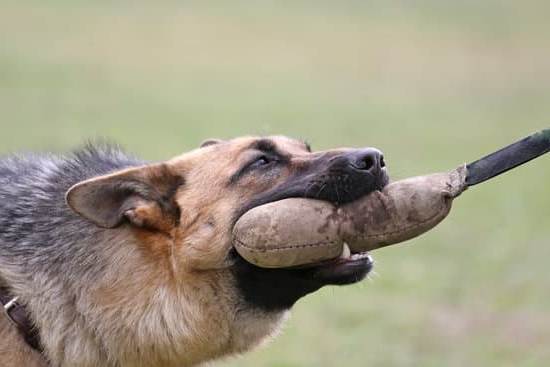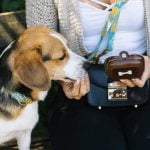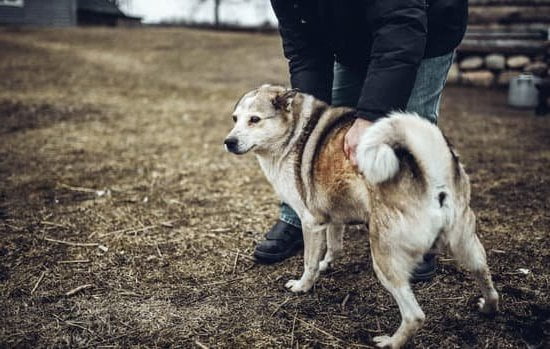Is your dog displaying signs of reactivity toward other dogs or people? Understanding and addressing dog reactivity is an essential part of responsible pet ownership. Dog reactivity training is crucial for ensuring the safety and well-being of both your canine companion and those around them.
Reactive behavior in dogs can manifest in various ways, from barking and lunging to growling and even aggressive actions. It’s important to recognize the different types of dog reactivity and understand what triggers these behaviors in order to effectively address them.
Identifying triggers for reactive behavior is a key aspect of dog reactivity training. By pinpointing the specific situations or stimuli that lead to your dog’s reactive behavior, you can work towards creating a training plan that addresses these triggers and helps your dog develop more positive responses.
Types of Dog Reactivity
When it comes to understanding dog reactivity training, it’s important to recognize the different types of reactivity that a dog may display. Each type of reactivity may require a unique approach and training technique in order to address and correct the behavior effectively.
1. Leash Reactivity: Leash reactivity occurs when a dog displays aggressive or fearful behavior while on a leash. This can be triggered by seeing other dogs, people, or even objects such as bicycles while on a walk. Common signs of leash reactivity include barking, lunging, or pulling on the leash.
2. Fear-based Reactivity: Dogs with fear-based reactivity may display aggression or avoidance behaviors when they encounter something that triggers their fear. This can include unfamiliar people, loud noises, or certain environments.
3. Territorial Reactivity: Some dogs may become reactive when they feel that their home or yard is being invaded by other animals or people. They may bark excessively, growl, or attempt to chase away the perceived threat.
Training techniques for each type of reactivity may involve desensitization and counter-conditioning, as well as positive reinforcement methods to help the dog associate their triggers with positive experiences. It’s crucial for dog owners to understand the specific type of reactivity their dog is displaying in order to implement an effective training plan.
In addition to recognizing the type of reactivity present in a dog, it’s essential for owners to identify the specific triggers that lead to reactive behavior in their pets. By pinpointing these triggers, owners can work towards desensitizing their dogs and helping them develop more positive associations with the things that prompt reactive responses. This process requires patience and consistency in training efforts but can lead to significant improvements in a dog’s behavior over time.
Identifying Triggers for Reactive Behavior
When it comes to addressing dog reactivity, one of the first and most crucial steps is identifying the triggers for reactive behavior. Reactive behavior in dogs can be triggered by a variety of stimuli, including other dogs, strangers, loud noises, or even specific objects. By identifying these triggers, pet owners and trainers can better understand what causes the reactive behavior and develop a targeted training plan to address it.
Common Triggers for Reactive Behavior
Common triggers for reactive behavior in dogs include fear, anxiety, past traumatic experiences, and lack of socialization. For some dogs, specific sounds or movements may set off a reactive response. Other dogs may become reactive when encountering unfamiliar people or animals. Identifying these triggers requires careful observation of a dog’s behavior in different situations and environments.
Observation and Record-Keeping
To effectively identify triggers for reactive behavior, pet owners should make an effort to observe their dog’s reactions in different situations. It can be helpful to keep a record of when and where the reactive behavior occurs, as well as the specific stimulus that triggered it. This information can provide valuable insights into the root causes of the reactivity and guide the development of a tailored training plan.
Behavioral Assessment by Professionals
In some cases, working with a professional trainer or animal behaviorist may be necessary to accurately identify triggers for reactive behavior in dogs. These experts can conduct behavioral assessments to evaluate a dog’s responses to various stimuli and provide valuable insights into the underlying factors contributing to the reactivity. By understanding the specific triggers that lead to reactive behavior, pet owners and trainers can take targeted steps towards addressing and managing this challenging issue through comprehensive dog reactivity training.
Importance of Proper Training for Reactive Dogs
The Impact of Reactive Behavior on Dogs
Reactive behavior in dogs can have a significant impact on their overall well-being and quality of life. It can lead to heightened stress, anxiety, and fear, which can result in aggressive outbursts and unsafe situations for both the dog and those around them.
Without proper training and management, reactive behavior can escalate, making it challenging for the dog to engage in normal activities such as walks or visits to the park. As a responsible pet owner, it is crucial to recognize the importance of addressing reactivity in dogs through proper training techniques.
Building Trust and Confidence Through Training
Proper training is key to helping reactive dogs build trust and confidence. Positive reinforcement training techniques play a vital role in teaching reactive dogs how to respond appropriately to triggers and stimuli that typically cause reactive behavior.
By using rewards and praise, pet owners can encourage desirable behavior while simultaneously building a strong bond with their furry companions. Dog reactivity training focuses on replacing negative reactions with positive ones, allowing the dog to feel more secure and less threatened in triggering situations.
Improving Safety and Well-Being
Training reactive dogs is essential for improving safety within the household and public settings. It enables pet owners to manage their dog’s behavior effectively, reducing the risk of aggressive incidents.
Furthermore, addressing reactivity through proper training contributes to the overall well-being of the dog by promoting mental stimulation, socialization, and emotional stability. When pet owners invest time and effort into training their reactive dogs, they are taking proactive steps towards creating a safer environment for both their pets and those around them.
Positive Reinforcement Training Techniques for Reactive Dogs
When it comes to training a reactive dog, positive reinforcement techniques can be incredibly effective in modifying their behavior. These techniques focus on rewarding good behavior rather than punishing bad behavior, which can help build trust and confidence in reactive dogs. Here are some positive reinforcement training techniques that can be beneficial for reactive dogs:
1. Counter-conditioning: This technique involves changing the dog’s emotional response to a trigger by pairing it with something positive, such as treats or toys. For example, if a dog is reactive towards other dogs, the owner can use counter-conditioning by giving the dog treats every time they see another dog at a safe distance.
2. Desensitization: Desensitization involves gradually exposing the dog to their triggers in a controlled and positive way. This could mean starting at a distance where the dog is comfortable and slowly decreasing the distance over time as they become more relaxed and less reactive.
3. Clicker training: Clicker training is a form of operant conditioning that uses a clicker to mark desired behaviors and then rewards the dog with treats or praise. This method can be particularly effective for teaching reactive dogs new, non-reactive behaviors.
Using these positive reinforcement techniques for dog reactivity training can help create a more harmonious and stress-free environment for both the dog and their owner. It is important to remember that each dog is unique, so finding the right combination of techniques may take time and experimentation. Seeking guidance from a professional trainer experienced in working with reactive dogs can also be valuable in developing an effective training plan tailored to your specific canine companion’s needs.
Working With a Professional Trainer
Qualifications and Experience
When selecting a professional trainer for your reactive dog, it is important to consider their qualifications and experience. Look for trainers who have expertise in animal behavior, particularly working with reactive dogs. It can also be helpful to seek out trainers who utilize positive reinforcement techniques, as this approach has been shown to be effective in addressing reactive behavior.
Customized Training Plans
A professional trainer will work with you to create a customized training plan that specifically addresses your dog’s reactivity issues. This plan may include desensitization and counter-conditioning techniques, as well as exercises to improve impulse control and focus. The trainer will also provide guidance on managing your dog’s triggers and creating a structured environment that supports their training.
Support and Guidance
Working with a professional trainer provides ongoing support and guidance as you navigate the process of training a reactive dog. The trainer can offer insight into your dog’s behavior, help you understand their triggers, and provide feedback on your training progress. Additionally, they can offer reassurance and encouragement when faced with challenges, ultimately helping you stay motivated and consistent in your efforts towards successful dog reactivity training.
Creating an Environment to Reduce Reactivity
Creating an environment that reduces reactivity in dogs is crucial for their well-being and the safety of those around them. By understanding the triggers for reactive behavior and implementing proper training techniques, dog owners can create a more peaceful and harmonious environment for their pets.
One effective method for reducing reactivity in dogs is through desensitization and counterconditioning. This involves gradually exposing the dog to their triggers in a controlled environment, while using positive reinforcement to change their behavior and emotional response.
For example, if a dog is reactive towards other dogs, the owner can start by having the dog at a distance where they can see another dog but not react negatively. Over time, the distance is reduced as long as the dog remains calm, thereby changing their association with other dogs from negative to positive.
In addition to training techniques, creating a safe and comfortable environment for reactive dogs is essential. This may involve providing them with a designated space where they can feel secure and relaxed, away from potential triggers. Furthermore, ensuring that the dog gets enough physical exercise and mental stimulation can also help reduce overall anxiety and reactivity.
| Training Technique | Description |
|---|---|
| Desensitization | Gradually exposing the dog to triggers in a controlled environment. |
| Counterconditioning | Using positive reinforcement to change the dog’s behavior and emotional response towards triggers. |
Patience and Consistency in Training Reactive Dogs
Reactivity in dogs can be challenging to manage, but with patience and consistency in training, it is possible to help your furry friend overcome their reactive behavior. Here are some important tips to keep in mind when working on dog reactivity training:
- Be patient: Reactivity is not a behavior that can be changed overnight. It will take time and consistent effort to see improvements in your dog’s behavior. It’s important to remain patient and not get frustrated during the training process.
- Consistency is key: In order for your dog to understand what is expected of them, it’s crucial to be consistent with your training methods. This includes using the same cues and commands, as well as maintaining a regular training schedule.
- Avoid reinforcing reactive behavior: It’s important to avoid inadvertently reinforcing your dog’s reactive behavior. This means not comforting or reassuring them when they are exhibiting signs of reactivity, as this can reinforce the behavior.
Using these tips as part of your dog reactivity training plan can help set your furry friend up for success in overcoming their reactive behavior. Remember that every dog is different, so it’s important to tailor your approach to fit your individual pet’s needs and temperament.
Working with a professional trainer who has experience in dog reactivity training can also provide valuable guidance and support throughout the process. With time, patience, and the right approach, it is possible to help your reactive dog become more confident and well-behaved.
Addressing Fear and Anxiety in Reactive Dogs
Reactive behavior in dogs is often a result of fear and anxiety, which can be triggered by various stimuli such as other dogs, strangers, loud noises, or unfamiliar environments. It’s important for dog owners to understand the underlying causes of their pet’s reactivity in order to effectively address and manage the issue. Fearful and anxious dogs may display aggressive behavior as a defense mechanism, making it crucial for owners to seek professional help and employ proper training techniques.
One effective method for addressing fear and anxiety in reactive dogs is desensitization and counterconditioning. This involves gradually exposing the dog to their triggers in a controlled and positive manner, while simultaneously rewarding calm and non-reactive behavior. Over time, the dog learns to associate their triggers with positive experiences, reducing their fear response and reactivity.
Another important aspect of addressing fear and anxiety in reactive dogs is creating a safe and secure environment for them. This includes providing a comfortable living space, regular exercise, mental stimulation, and a consistent routine. Additionally, building trust through positive reinforcement training techniques can help reduce fear and anxiety in reactive dogs.
It’s vital for dog owners to remember that addressing fear and anxiety in reactive dogs takes time, patience, and consistency. Seeking guidance from professional trainers who specialize in dog reactivity training can provide valuable insight and support for both the dog and its owner. By addressing the root cause of reactivity through compassionate training methods, fearful and anxious dogs can learn to feel more at ease in various situations.
| Training Technique | Description |
|---|---|
| Desensitization | Gradually exposing the dog to triggers while rewarding calm behavior. |
| Positive Reinforcement | Rewarding desirable behavior to build trust and reduce fear response. |
Managing Reactive Behavior in Public Settings
When it comes to managing a dog that exhibits reactive behavior in public settings, it is crucial for dog owners to be proactive and prepared. Understanding the triggers that cause reactive behavior in your dog is the first step to managing their behavior. Whether it’s other dogs, strangers, or loud noises, identifying these triggers will help you anticipate and manage your dog’s reaction.
One important aspect of managing reactive behavior in public settings is proper socialization and desensitization. Exposing your dog to different environments and situations in a controlled and positive manner can help reduce their reactivity over time. Positive reinforcement training techniques such as rewarding calm behavior and redirecting attention can also be effective in addressing reactive behavior while out in public.
Working with a professional trainer who specializes in dog reactivity training can provide invaluable support and guidance. A trained professional can assess your dog’s specific triggers and behaviors, as well as provide personalized training plans tailored to your dog’s needs.
They can also offer advice on how to manage reactive behavior while out in public and help you build the skills needed to handle challenging situations. By working together with a professional trainer, you can increase the chances of successfully managing your dog’s reactive behavior in public settings.
| Reactive Behavior Management Strategies | Description |
|---|---|
| Socialization and Desensitization | Gradually exposing the dog to triggers in a controlled environment to reduce reactivity. |
| Positive Reinforcement Training | Rewarding calm behavior and redirecting attention to address reactive behavior. |
| Professional Trainer Assistance | Seeking guidance from a professional specializing in dog reactivity training for personalized support. |
Conclusion
In conclusion, dog reactivity training is crucial for the well-being of both the dog and its owner. It is important to understand that reactive behavior in dogs can stem from fear, anxiety, or past experiences, and it is essential to address these underlying issues through proper training. By identifying triggers for reactive behavior and employing positive reinforcement training techniques, owners can help their dogs learn to manage their reactions in a controlled and supportive environment.
Working with a professional trainer can also be highly beneficial for addressing dog reactivity, as they have the expertise to tailor training methods to suit the specific needs of the dog. Additionally, creating an environment that reduces potential triggers and practicing patience and consistency in training are key factors in helping reactive dogs overcome their challenges.
Ultimately, the benefits of dog reactivity training extend beyond just reducing unwanted behaviors. With proper training, reactive dogs can become more confident, relaxed, and better able to handle public settings. By addressing fear and anxiety in reactive dogs through training and management techniques, owners can greatly improve their canine companion’s quality of life. Overall, investing time and effort into dog reactivity training can lead to a more harmonious relationship between the owner and their beloved pet.
Frequently Asked Questions
Can You Train Reactivity Out of a Dog?
Reactivity in dogs can be managed and improved through training, but it may never completely go away. Using positive reinforcement, desensitization, and counter-conditioning techniques can help reduce reactivity and teach the dog new, more appropriate behaviors.
Is It Too Late to Train My Reactive Dog?
It’s never too late to start training a reactive dog. While it may take longer to see progress in an older dog, with patience and consistent training, reactivity can be addressed at any age. Seeking professional help from a certified dog trainer or behaviorist is also recommended.
Does Dog Reactivity Ever Go Away?
Dog reactivity can improve over time with proper training and management techniques, but it may not entirely go away. Some dogs may always have certain triggers that cause them to react, so ongoing management and continued training are typically necessary to keep reactivity in check.

Welcome to the blog! I am a professional dog trainer and have been working with dogs for many years. In this blog, I will be discussing various topics related to dog training, including tips, tricks, and advice. I hope you find this information helpful and informative. Thanks for reading!





